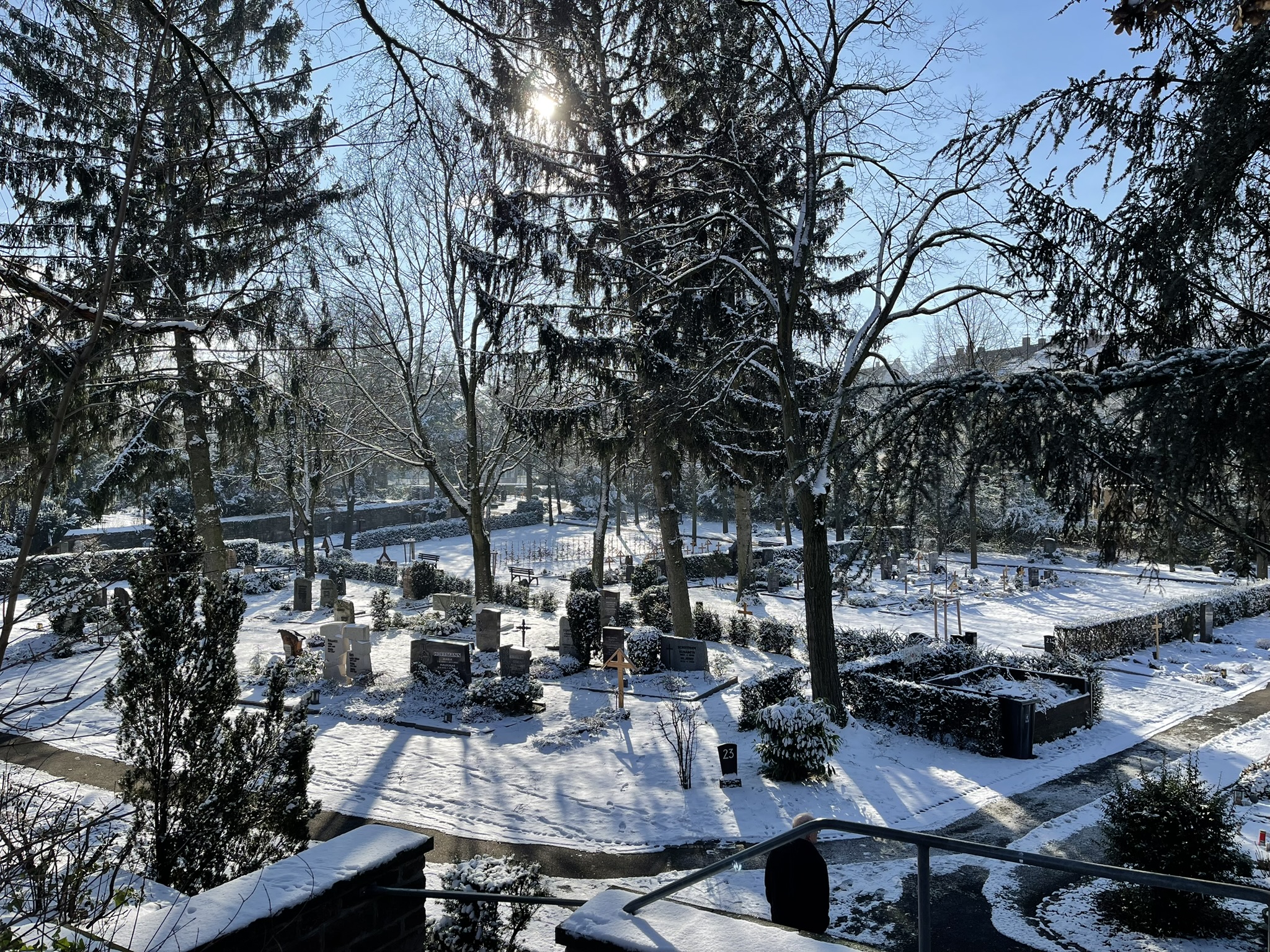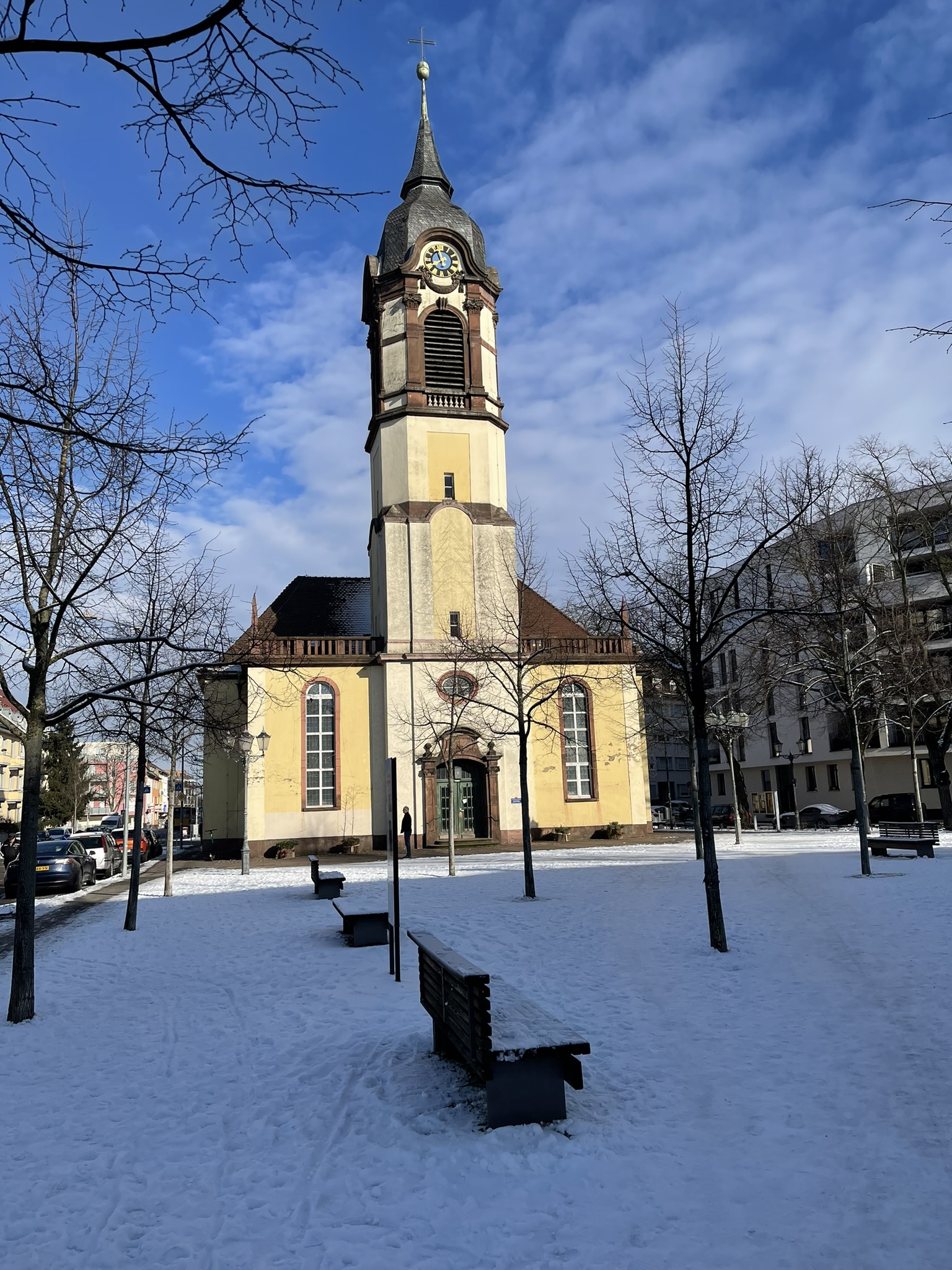20th -21st January 2024
After finding the link between my great, great, grandfather, Johann Michael Clur and the Clours of Welschneureut, I had hoped some day to visit the place that welcomed 58 Huguenot and Waldesian families in 1699. I wanted to get a feel of the place, to see the churches and try to imagine what life there may have been like in the seventeenth and eighteenth century. I also wanted to look for any additional clues that may help me look further back along the family line. Moreover, the identity of Johann Michael’s father was still a mystery (see also **Johann Michael Clur – 1830-1902 and The Clurs (Clours) of Welschneureut (1699-1860)).
It was a cold, snowy day in January when Wilfried Visser and I set off. The whole week had been cold and snowy. I was enjoying the cold crispness of the temporary white world. Our final destination was Oberlech in Austria, but we planned to spend the night near Neureut, Karlsruhe as this was about half way. Coming from South Africa, seeing so much snow filled me with wonder and excitement, and gave the entire trip a remarkedly surreal feeling. The leaves of the evergreen fur trees had been transformed into icicles that glistened in the the afternoon sun that did its best to shine through the clouds. The sky was a clear blue when visible through the grey mist, and the landscape a still, white blanket with windmills, pylons and trees peeping through. I have always been fascinated by mistletoe, and near Karlsruhe it was in a wonderful, grey-white, abundance.
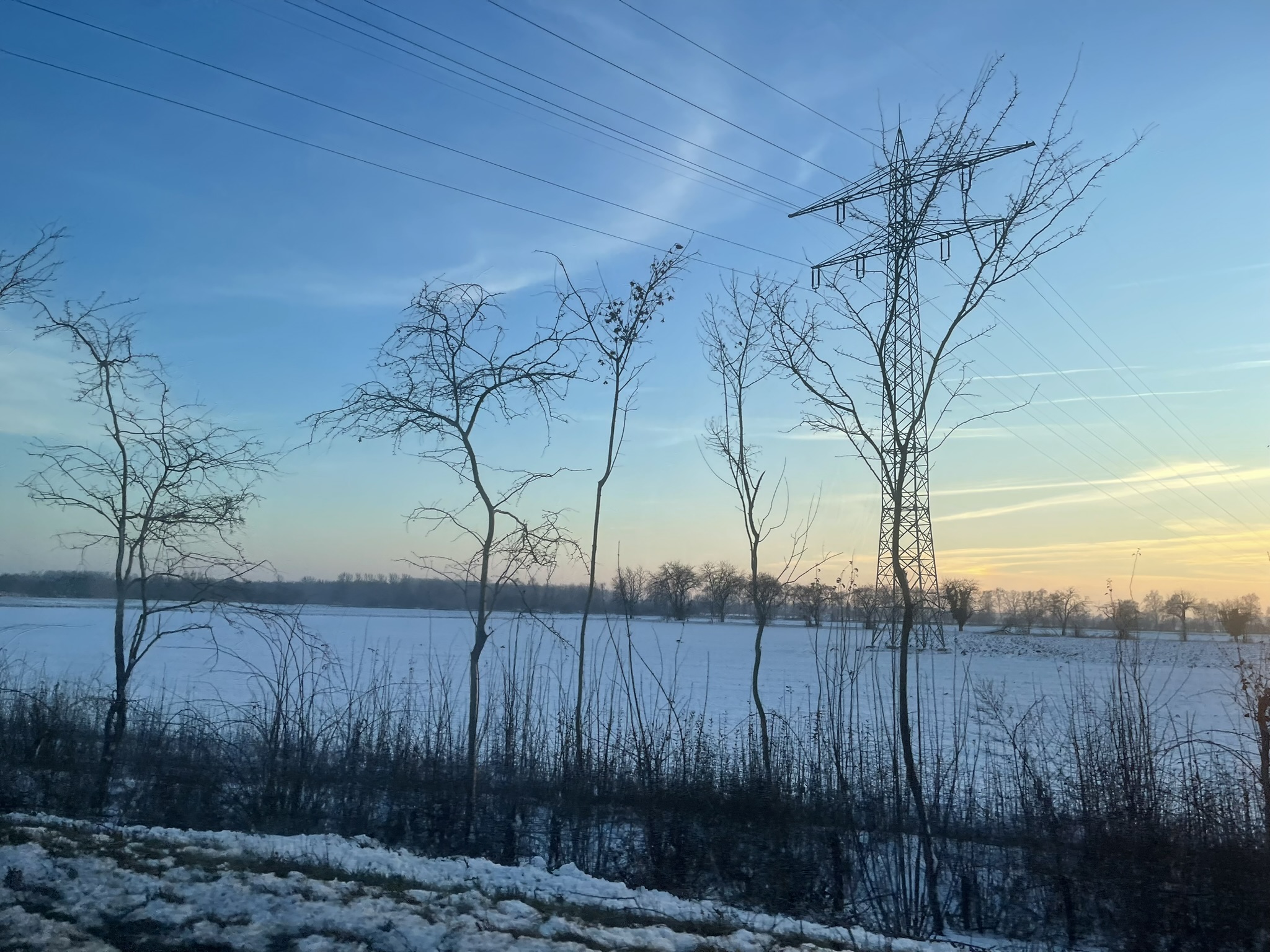
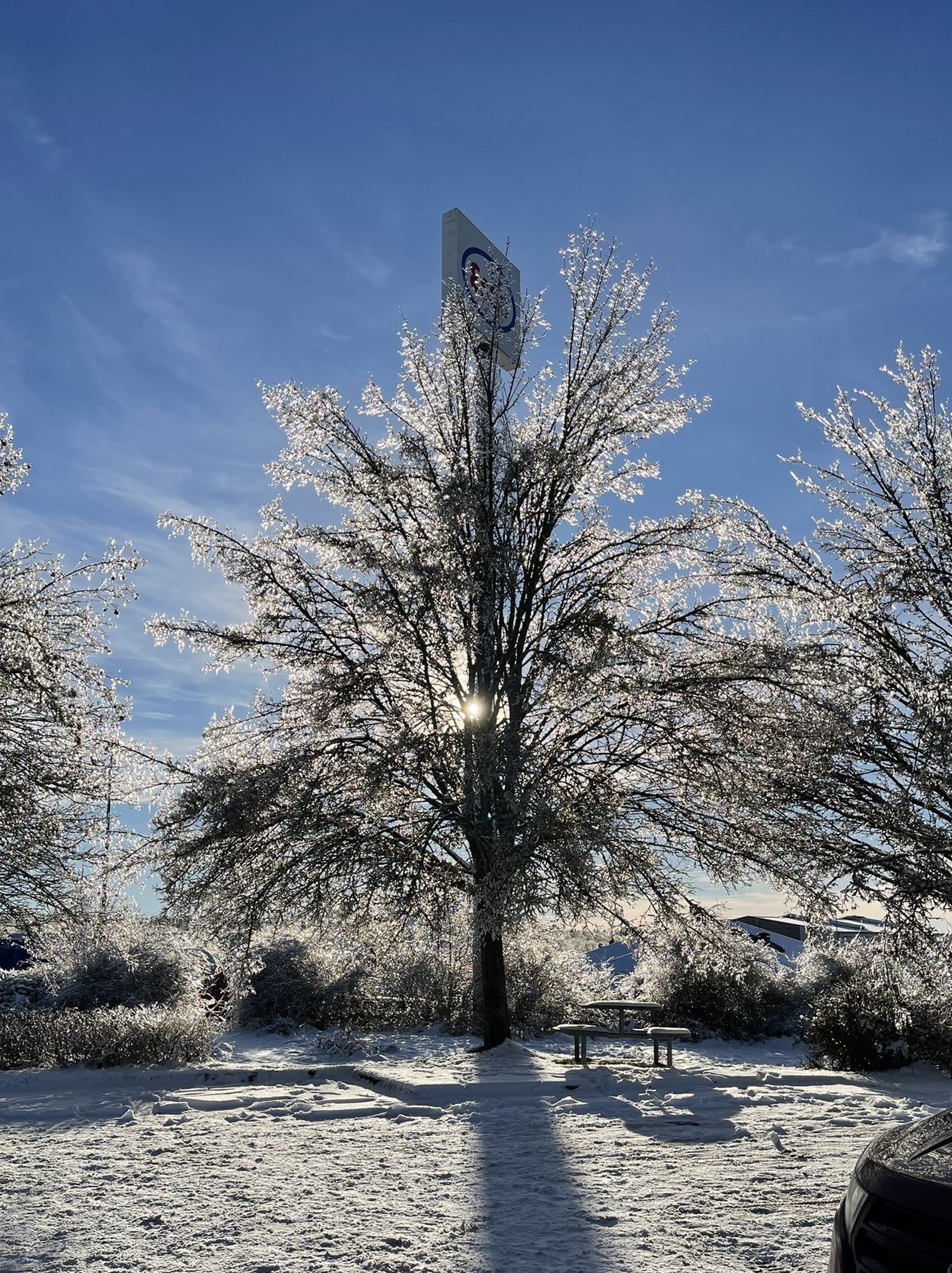
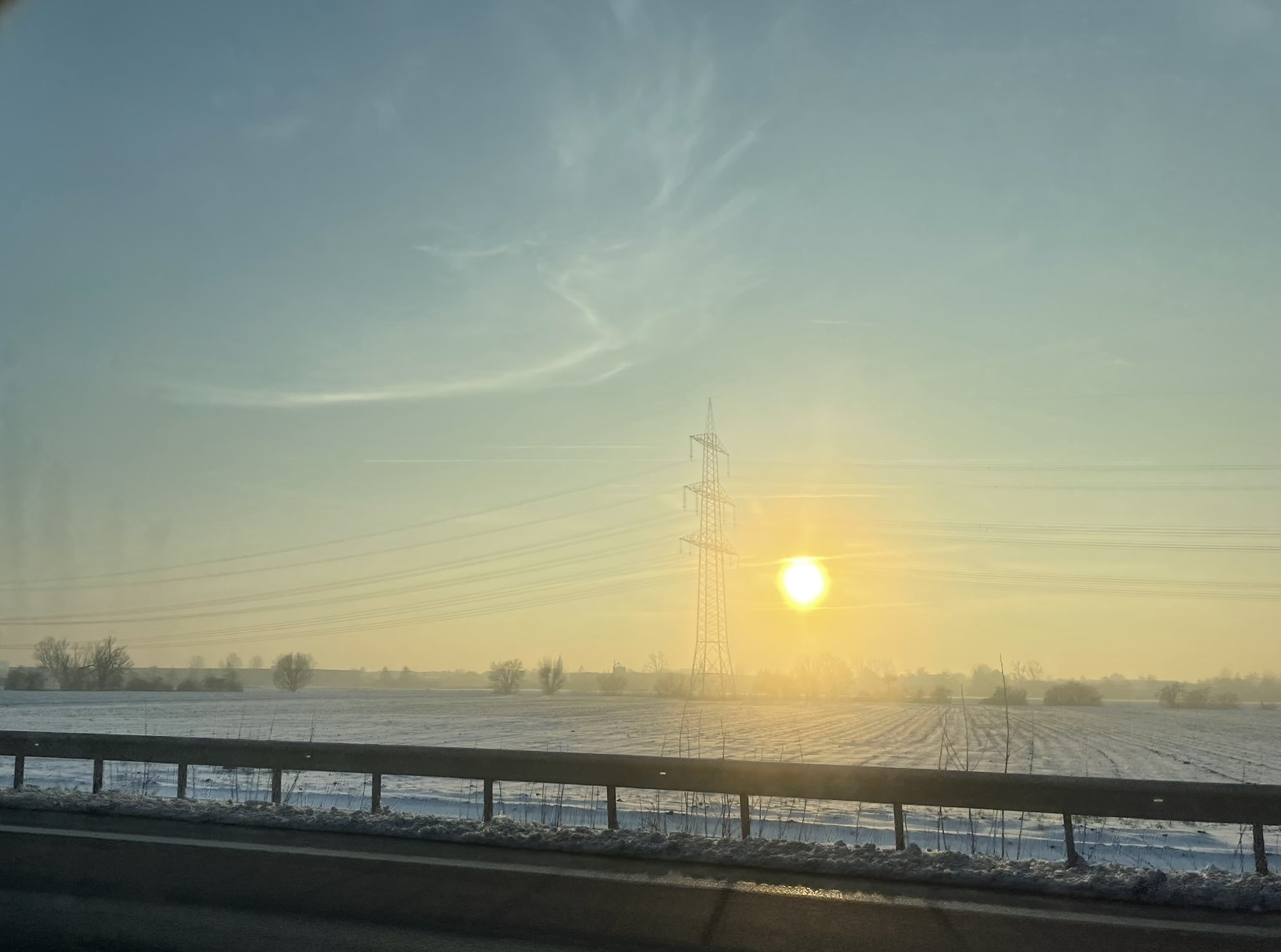
Copyright: © saclur
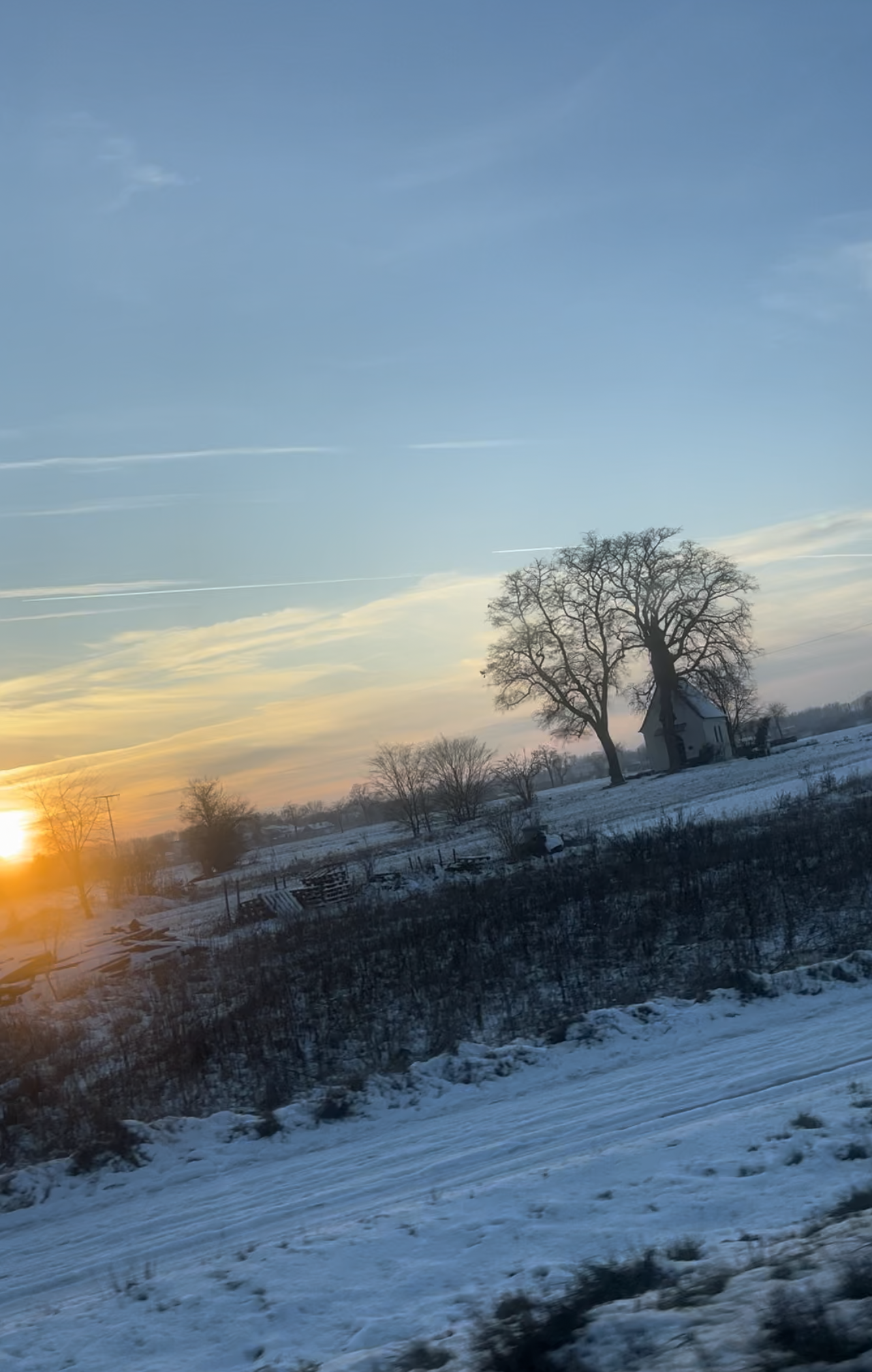
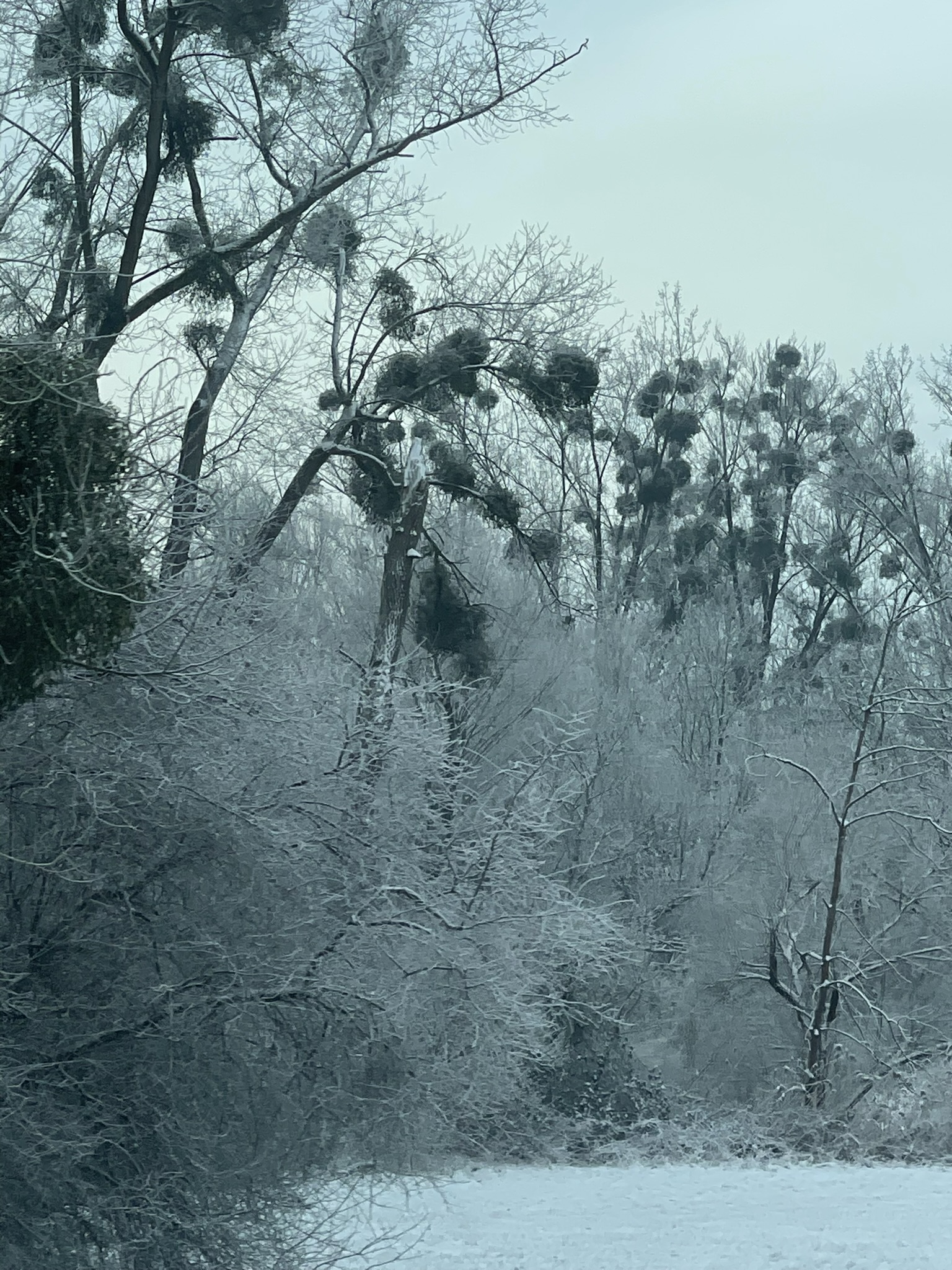
By the time we checked into our hotel for the night, is was very cold, rather dark and a little gloomy. Our hotel near Neureut was simple and somewhat overpriced, but our room number, 408 was made up of multiples of Wilfried’s lucky number so we were not perturbed. We set off on a long walk with the snow crunching under our feet to discover what remained of Welschneureut. We had to take care not to step on the slippery black ice covering the streets here and there as we went. We walked along Neureut Hauptstrasse looking at the coloured houses, some still in farmhouse style, and came upon the Waldesian Church. Just further on, on the corner of Neureut Hauptstrasse and Welschneureuterstrasse there is a small information center dedicated to the history of Welschneureut. I was intrigued by it and tried my best to read the German. Wilfried was very helpful, translating where needed.
I looked at the list of the 58 families that came in Welschneureut but, to my disappointment, I did not find the name “Clour”. However, family number 57 is listed as “unbekannt” (German for unknown), so I wondered if this could have been the family of my direct ancester Clorius Clour going back 10 generations. In the list of mayors of Welschneureut, I found “um 1822 Clour”. This could not have been Christian Clour (1750-1794) who is listed in the Welshneureut Church Records as a mayor, as he was already dead by 1822. This could however, have been one of Christian Clour’s children; possibly Christian Clour (junior) (1774-1846) who is listed in the records as a “warden of the church”, or even my great, great, grandfather’s namesake and uncle, Johann Michael Clour (1780 -?). (See also The Clurs (Clours) of Welschneureut (1699-1860)). Another possibility is that the date given is incorrect and it was referring to Christian Clour (1750-1794). I noticed that 1822 is listed twice, making me wonder if a typing error may have been made. I also saw that Phillip Eggly was listed as the pastor between 1829 and 1834, confirming that the name of the pastor on the baptism certificate of my great, great, grandfather Johann Michael Clur (Clour) was indeed Eggly.
We then climbed up the snowy stairs that lead to the “Gemeindefriedhof von Welschneureut” – The South Cemetery of Welschneureut . We walked through the spooky graveyard looking for Clours. It was quite dark by then and most of the graves were covered with snow, making it impossible to read the names. So we were forced to abandon our quest for the night, but were determined to return at daylight the following day. We were now, not only cold, but very hungry too. So we then walked back, making a circle, past the Welschneureuter stone, crossed the railway line at the Welshneureuter train station, and made our way across a wide expanse of white snow. We had supper at the local Italian resturant “Italy, Italy”. As I walked past the station sign I noticed the light lighting our way was shining like the Waldesian symbol “Lux lucet tenebris“, “a light shines in the darkness”. (See also **Johann Michael Clur – 1830-1902).
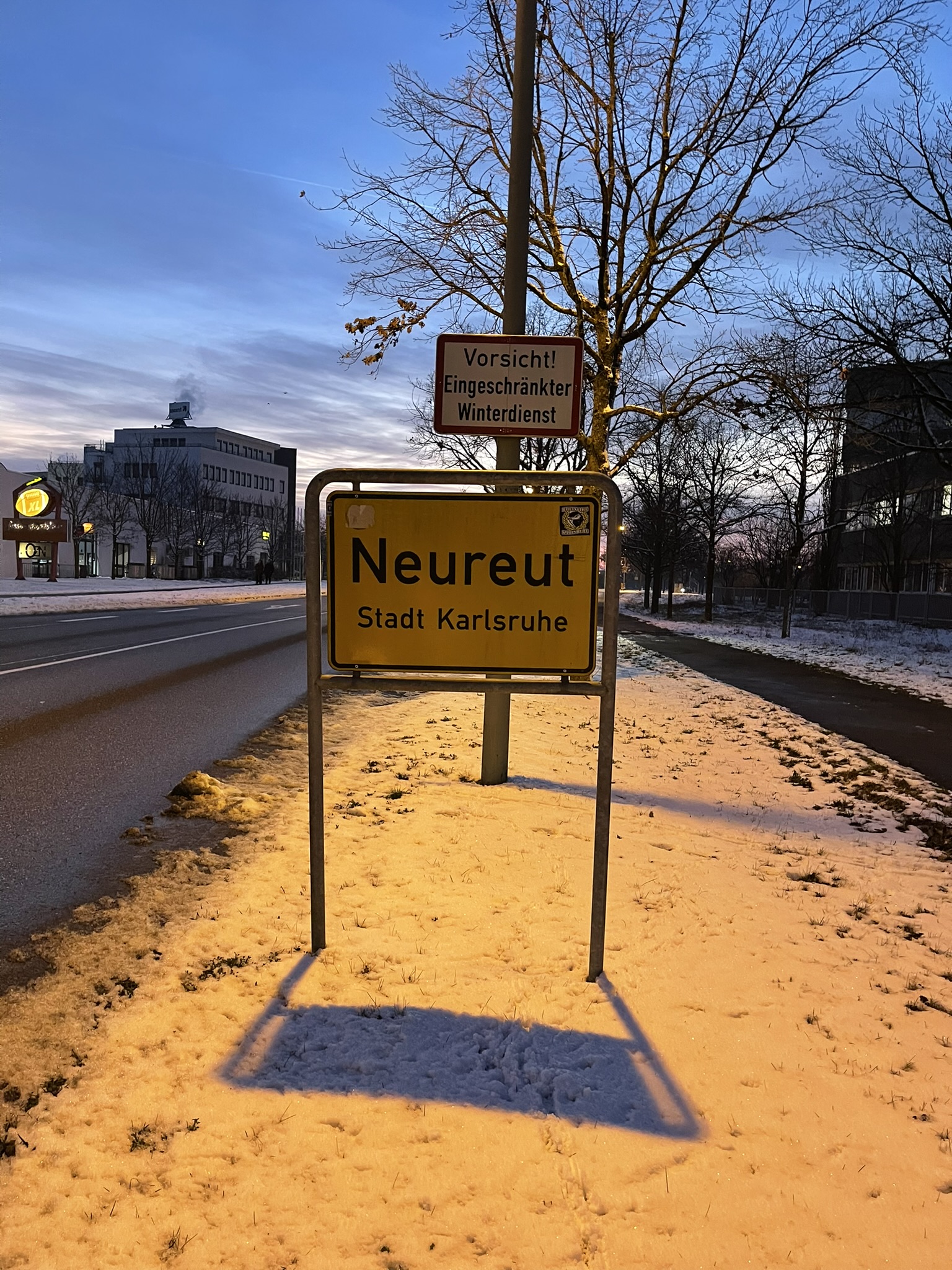
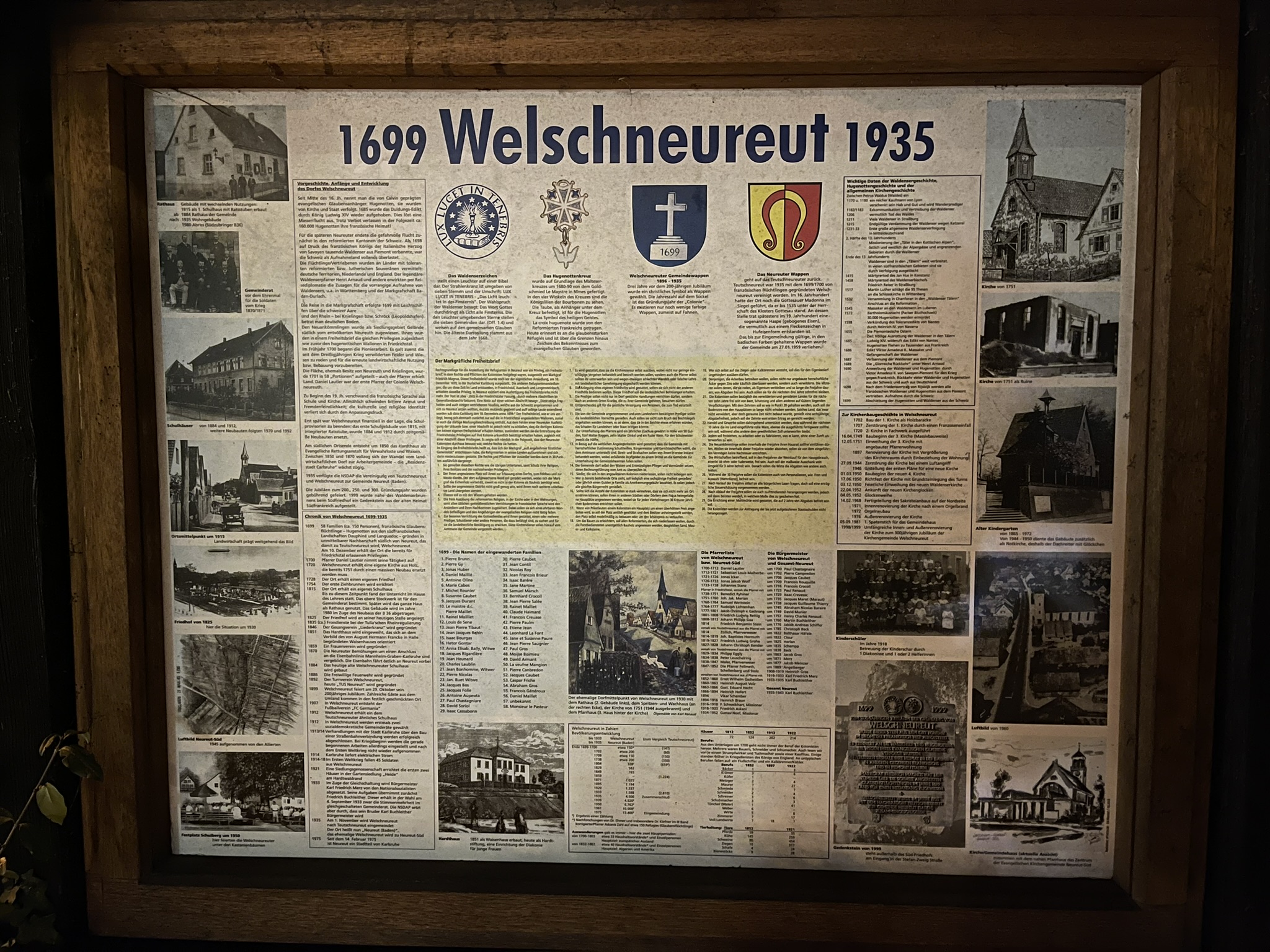

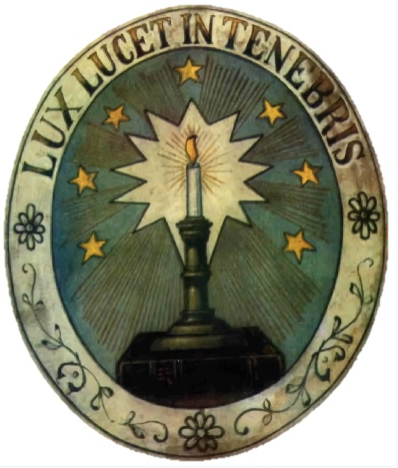
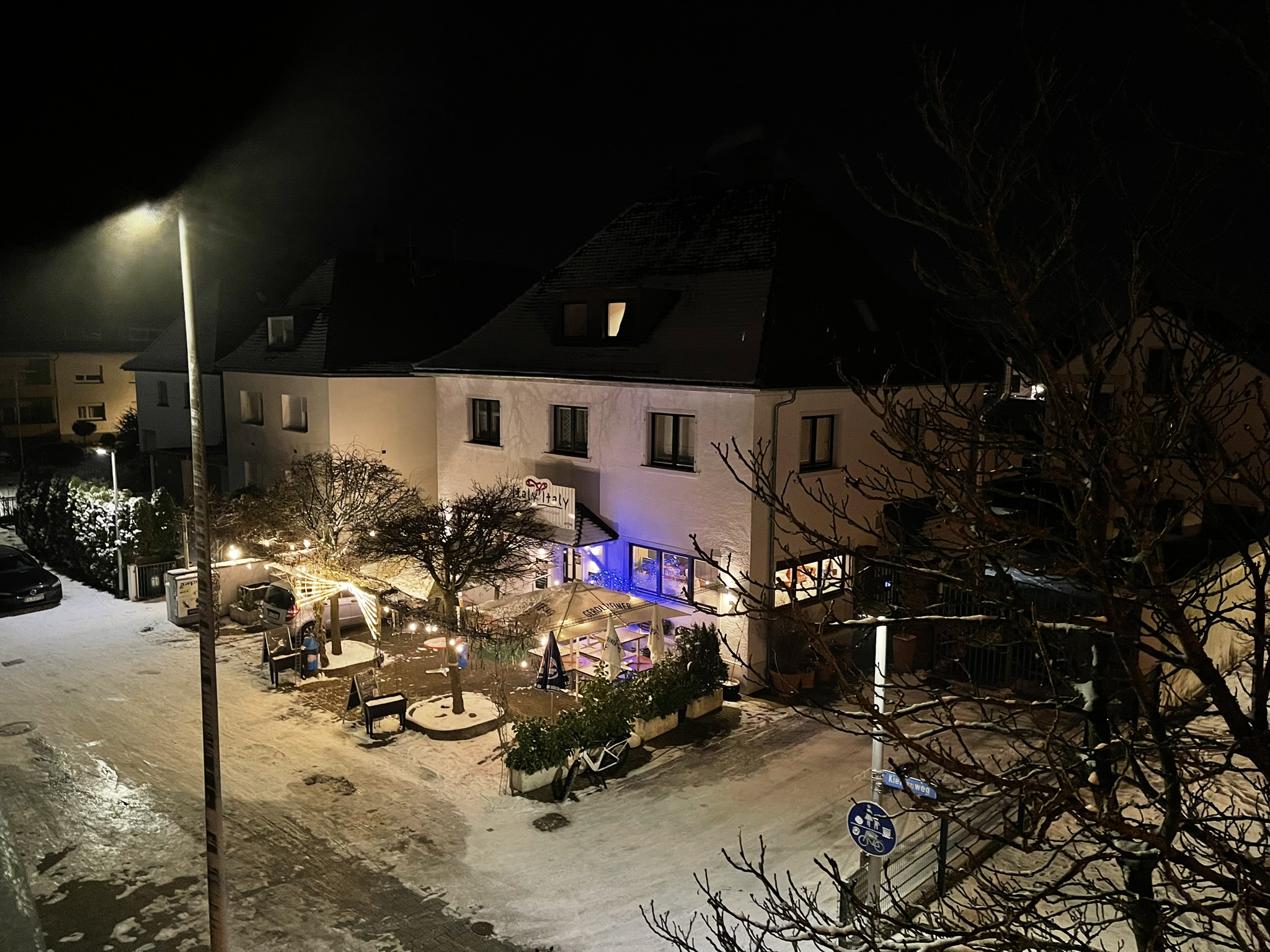
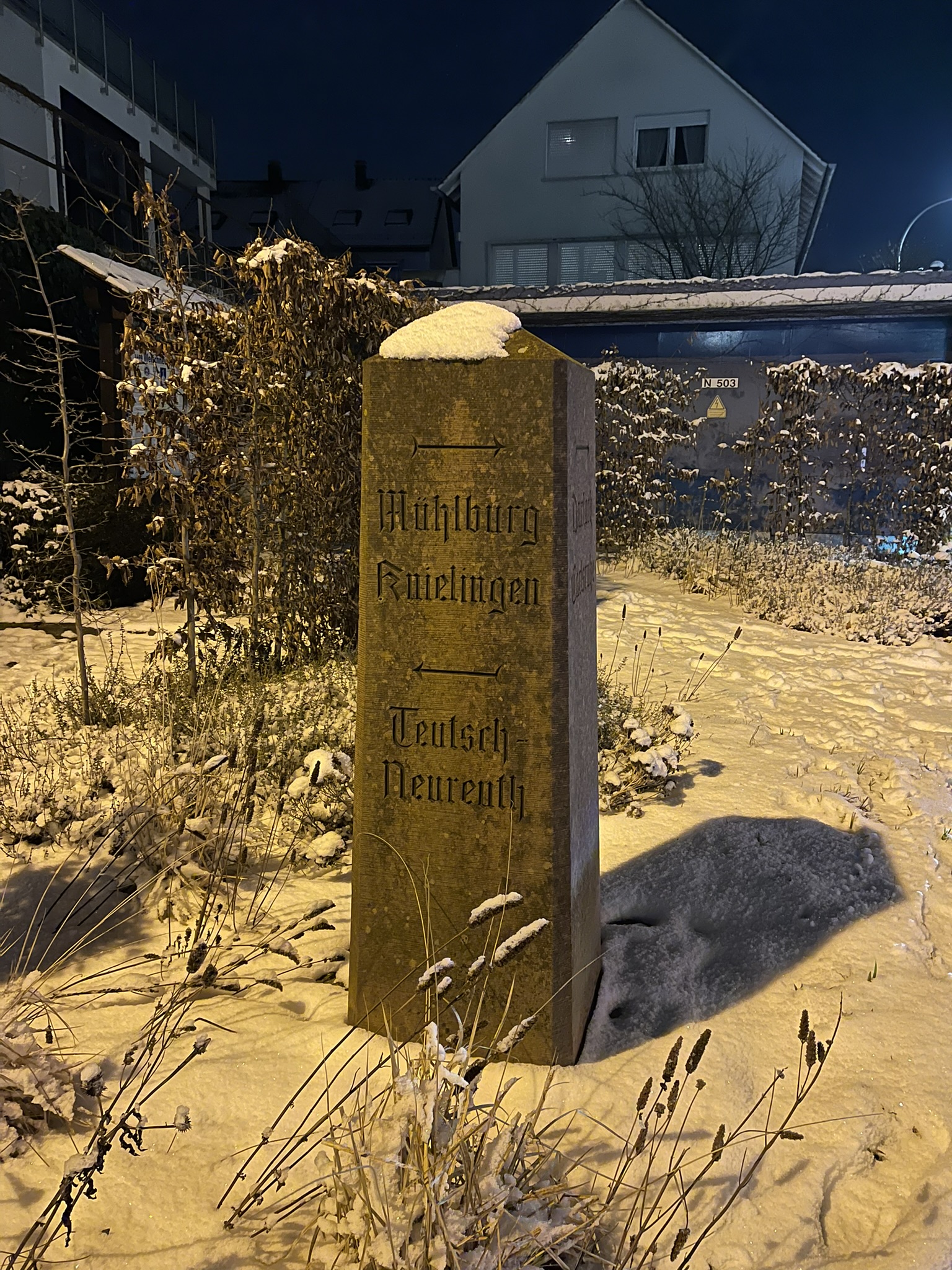
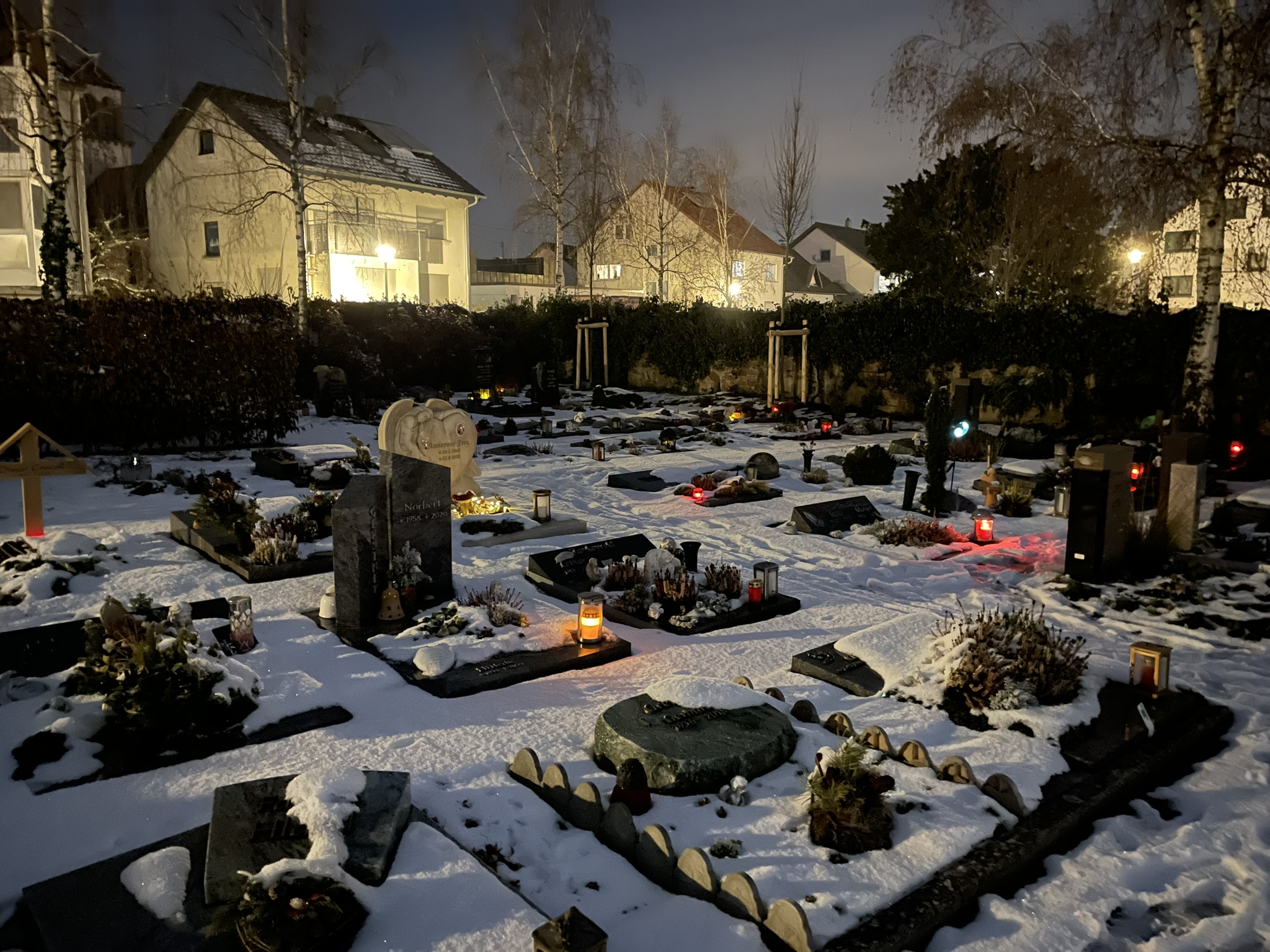
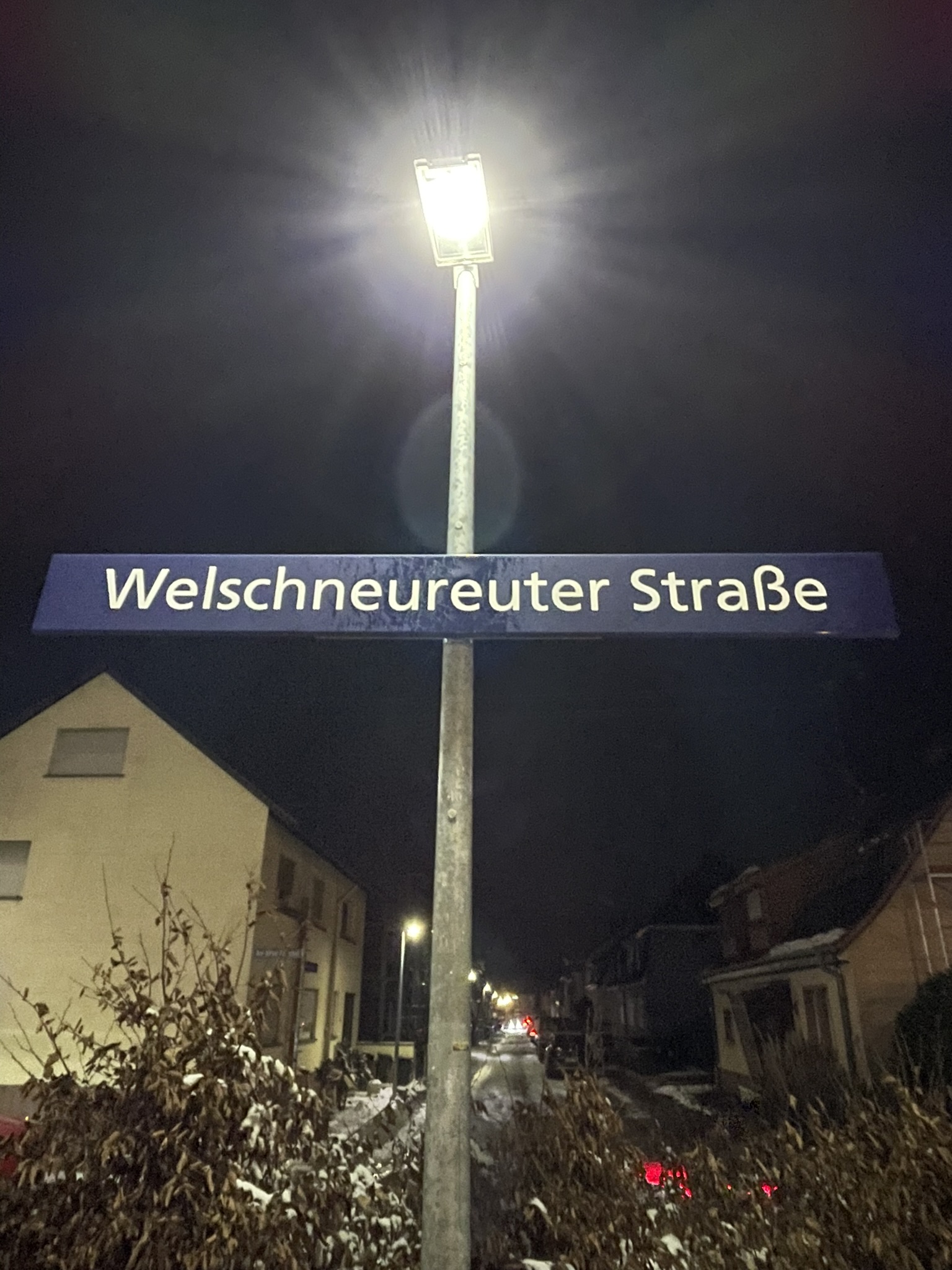
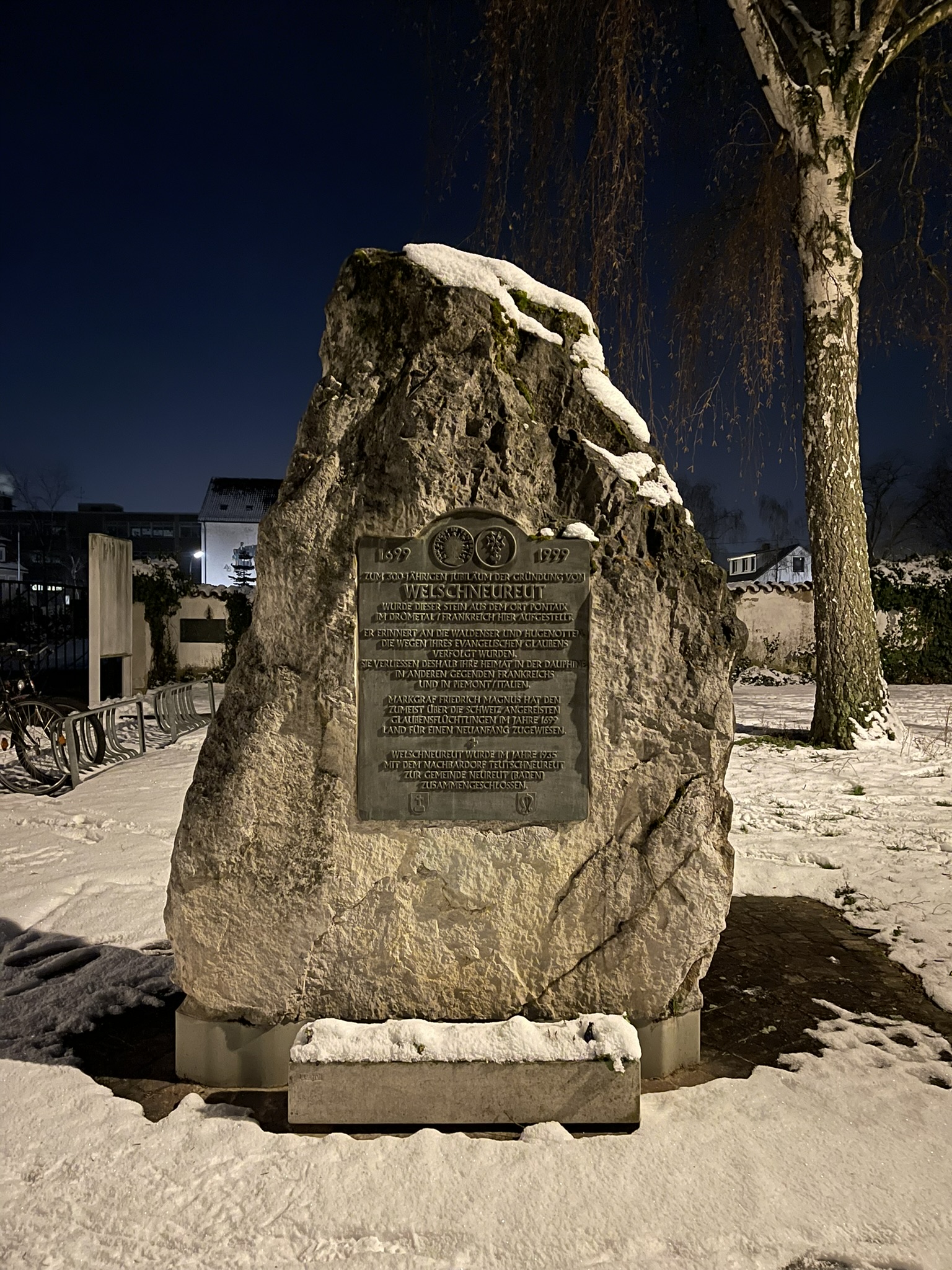
Photographs by Sally-Ann Clur Copyright: © saclur
There are conflicting reports about the construction of the first church in Welschneureut. In some reports the year 1702 is mentioned, but that place of worship appears to have only been a barrack, later followed by a simple wooden church. “l’Eglises Reformée de Mahlberg et Neüreüth Teres” was probably built in 1712. In 1720 a church was built on the site of the present Waldesian church. This was reconstructed in 1751 and destroyed in 1944 during the second world war. The present church was rebuilt in 1949/51 on that same site. From November 1699 till 1700 the Welschneureut dead were buried in Mühlburg cemetery nearby, and from 1700 to 1724 in Teutschneureut. In 1724 the colonists created their own cemetery.
Markgraf Friedrich Magnus of Barden-Durlach designated a piece of land on the 10th December 1699 for the establishment of the Friedrichstal village and encouraged French-speaking Walloons living in Billigheim and Mörlhein to the west of the Rhein, Huguenots and Flemings to settle there. It was just a few months earlier (17th September 1699) that the Waldenser group had received their settlement grant for the establishment of a colony at at Welschneureut. Friedrichstal, 16 kilometers north of Karlsruhe, is not far from Welschneureut, and marriages between the two settlements were not uncommon. In fact the marriage between Nicolas Clour (c.1690-1724), son of Clorius Clour from in the Swiss Canton of Bern, and Susanna Thibaut (?1692-1757), daughter of Jean Pierre Thibaut, one of the 58 first families to settle in Welschneureut, is recorded in the Friedrichstal church records of 1713.
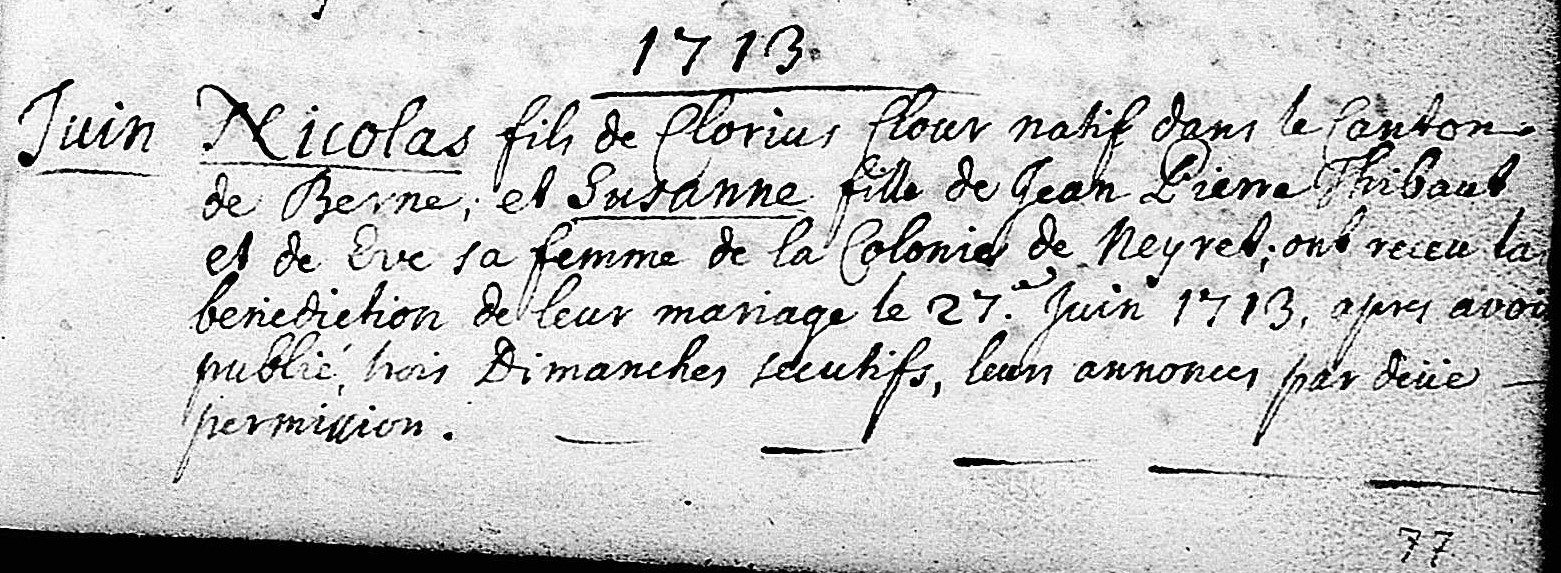
Welschneureut Church Records 1700-1809 by Cathryn S. Dippo. Heritage Books 2018; Friedrichstal Church Records 1698-1812 by Cathryn S. Dippo. Heritage Books 2005: Page 77 of Book 1; http://www.peter-hartleb.de/Exkursionen/Karlsruhe/Neureut/Neureut.htm
With this knowledge we set off the next morning after a good night’s sleep and full German breakfast, to visit the Evangelical Churches of Friedrichstal and Mülhburg, and the Waldesian Church of Welschneureut where my ancestors may have worshipped or have been buried. The weather was more gloomy, fresh snow was falling and the sky was grey. The streets of Friedrichstal were full of snow and we had to drive carefully. Despite the weather, there were no free parking bays around the church as everyone appeared to be attending the Sunday service. As we approached the church bells beckoned us. I found myself imagining Nicolas and Susanna Clour walking, as newlyweds, out of the church in Friedrichstal. I wondered how their courtship would have been. Did he walk from Friedrichstal to Welschneureut to visit her, or was it an arranged marriage? Why, if he was from Friedrichstal did they settle in Welschneureut?
While roaming around the church grounds we were accompanied by organ music emanating from within the church. There were several monuments to be seen. One for the local soldiers lost in the world wars and another commemorating 100 years since the arrival of the Huguenots in Friedrichstal. Next to the church, the “Heimat und Hugenottenmuseum” of Friedrichstal can be found. It was closed unfortunately as it had suffered water damage, and will only be opening again in the summer as part of the 750th jubilee celebrations of the area. The museum: “Oscar Hornung Haus”, is named after Oscar Hornung who documented the history of the Huguenots’ arrival in Friedrichstal.
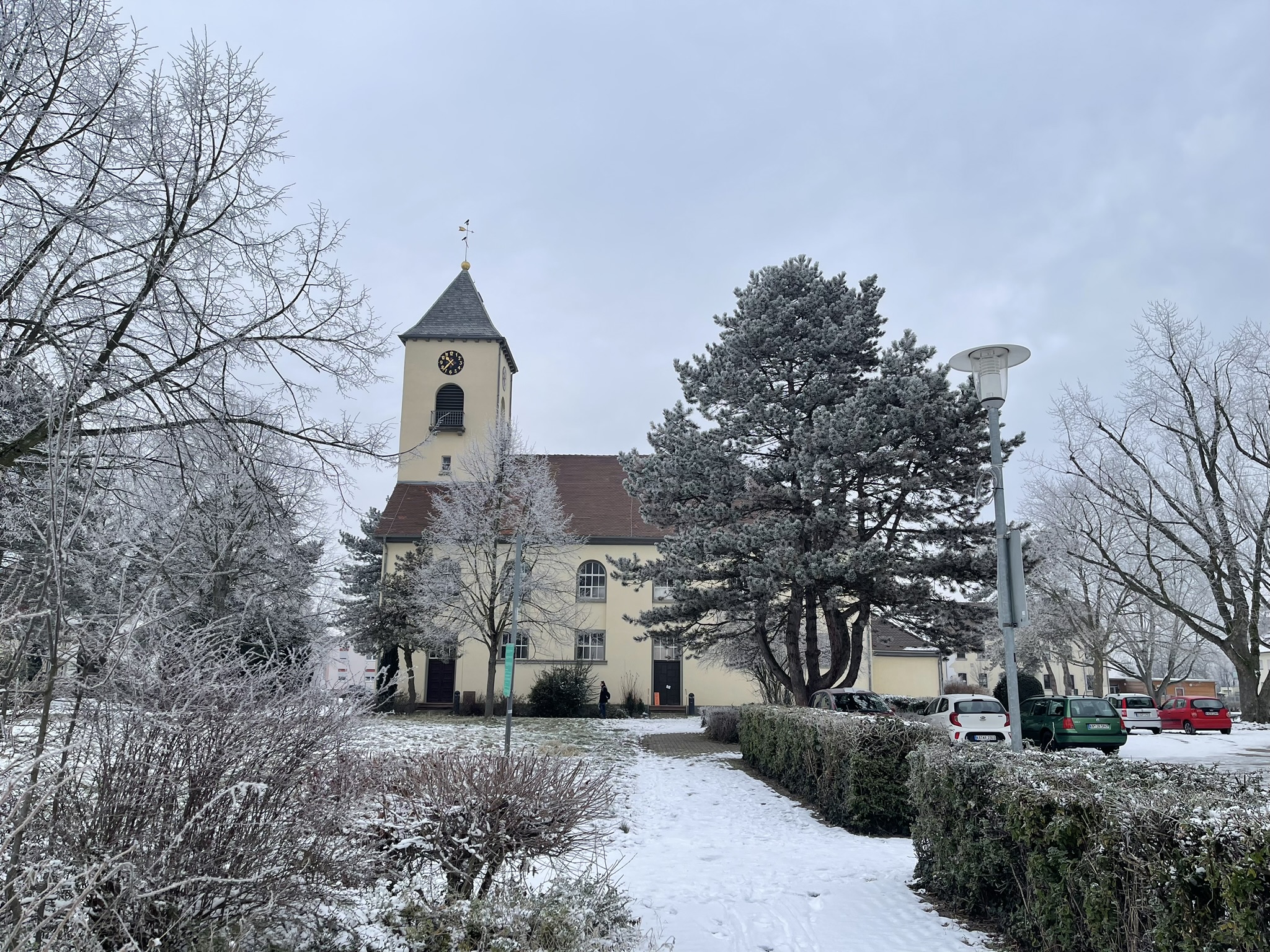


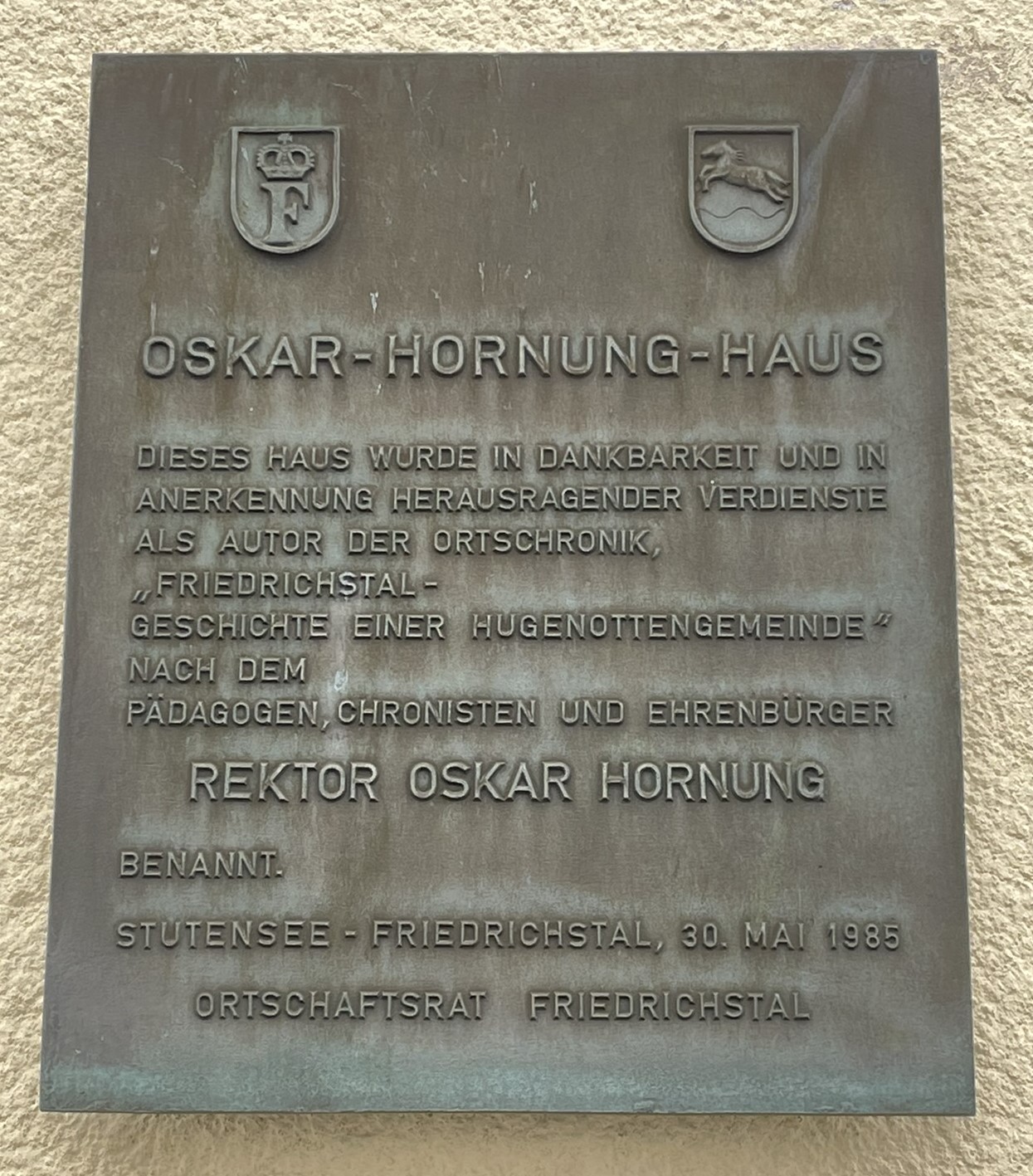
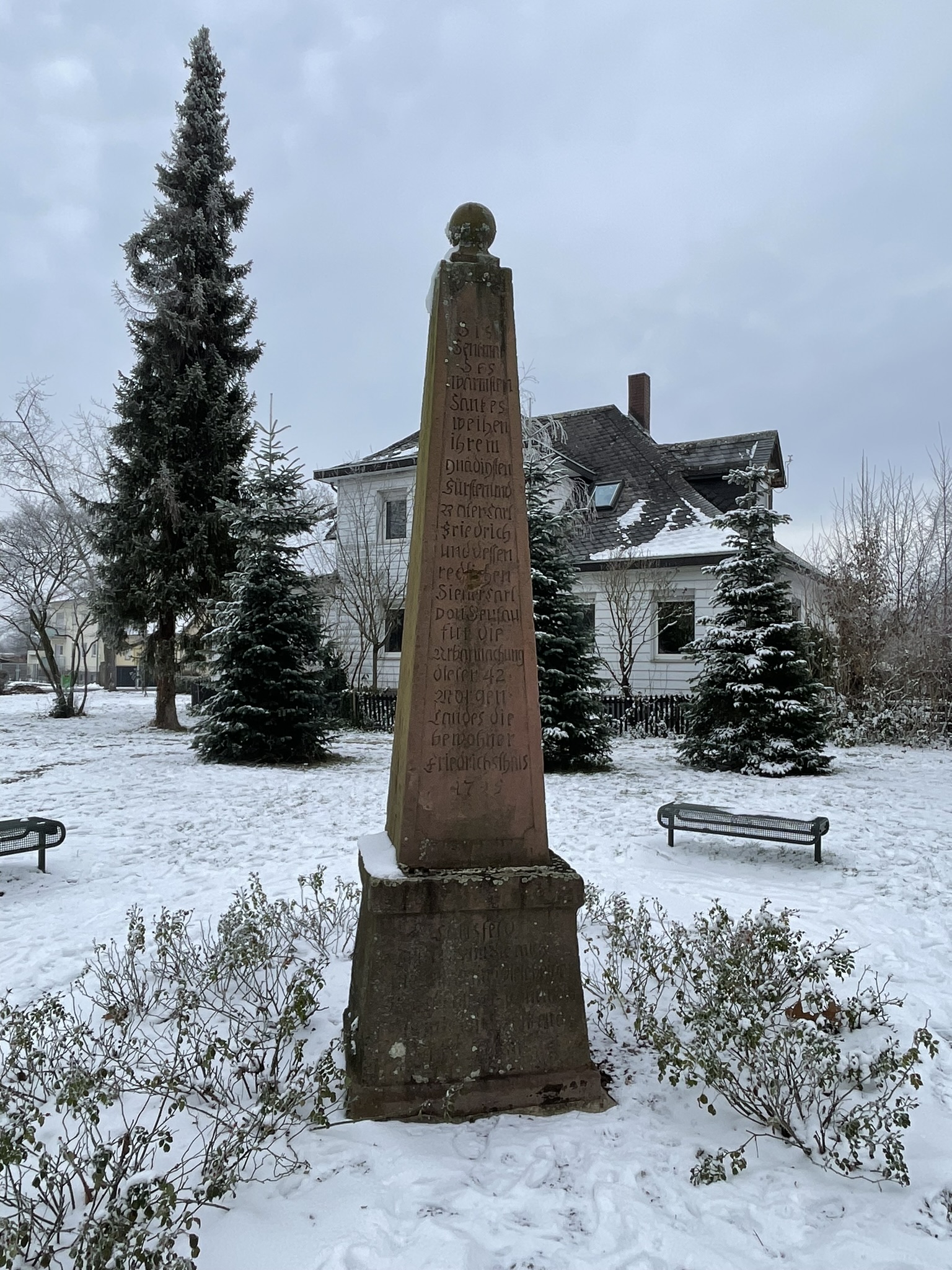
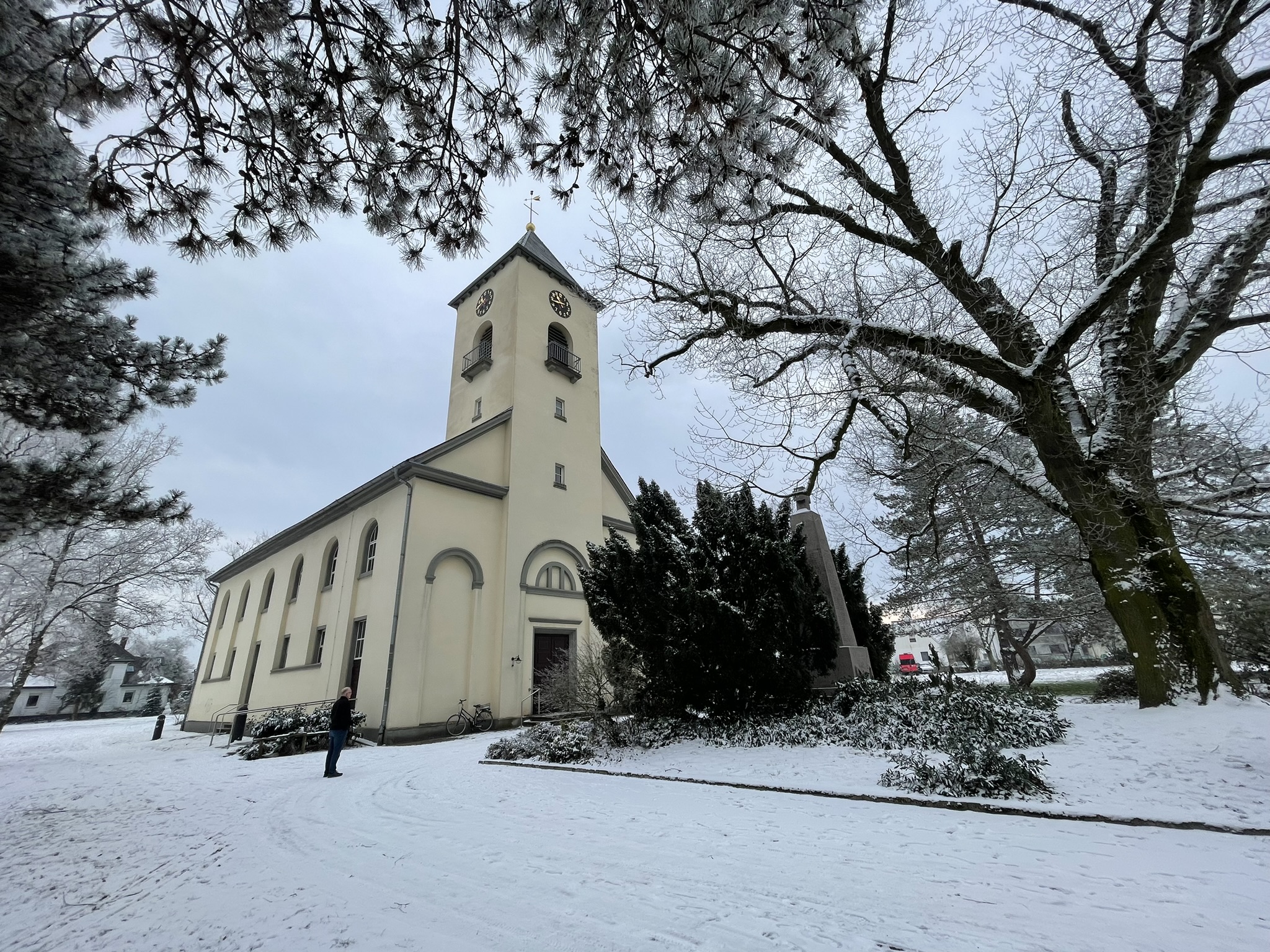
After roaming around in the snow surrounding the church, we returned to the car and drove out the other side of Friedrichstal, in the direction of Welschneureut. We had not gone far when Wilfried suddenly turned the car around. We had to go back and speak with the pastor he said. By the time we arrived back at the church, the service was over and a few hangers oners where drinking tea and eating biscuits at the front entrance. Inside the church we met the church sexton “Kirchediener”, who was very friendly. Unfortunately the name Clour meant nothing to him. However, he advised looking the name up in Oskar Hornung’s book “Friedrichstal Geschichte einer Hugenotten Gemeinde“. He promised to send us information about the coming jubilee and the opening times of the museum in the summer. I later discovered that the original site of Friedrichstal included 25 houses for the first 13-15 families. Once again I was disappointed as the names listed did not include Clour. There was a slightly later influx of Huguenots from France, Pfalz and Switzerland. Maybe Clorius Clour was one of them?
Later I managed to get my hands on a copy of Oskar Hornung’s book. Page 167, suggests that Clorius Clour lived some years in Bern, and lists the name Clour as a Waldesian name among the early settlers in Friedrichstal on page 169. This makes me believe that Clorius Clur was one of the second wave of Huguenots who fled France mostly from the Dauphin, Cévennes and Languedoc regions, before and after the Revocation of the Edict of Nantes in 1685 by Louis XIV. This act prohibited the existence of Protestant worship in France. The refugees arrived in Switzerland initially, where they were granted asylum in Helvetian cantons such as Zurich and Bern, however they were later relocated to Germany, Holland and England.
Once back in Welschneureut we walked though the South Cemetery again, towards the Waldesian church. There we found several Clours: Juliana and Walter Clour, Alfred and Luise Clour, as well as Reinhard Clour. There may have been more, as many names were still covered with snow. I also recognized other names linked with the Clours over the years: Durand, Crocoll, Gros, Renaud, Dunke, and Boeuf. (See also The Clurs (Clours) of Welschneureut (1699-1860))
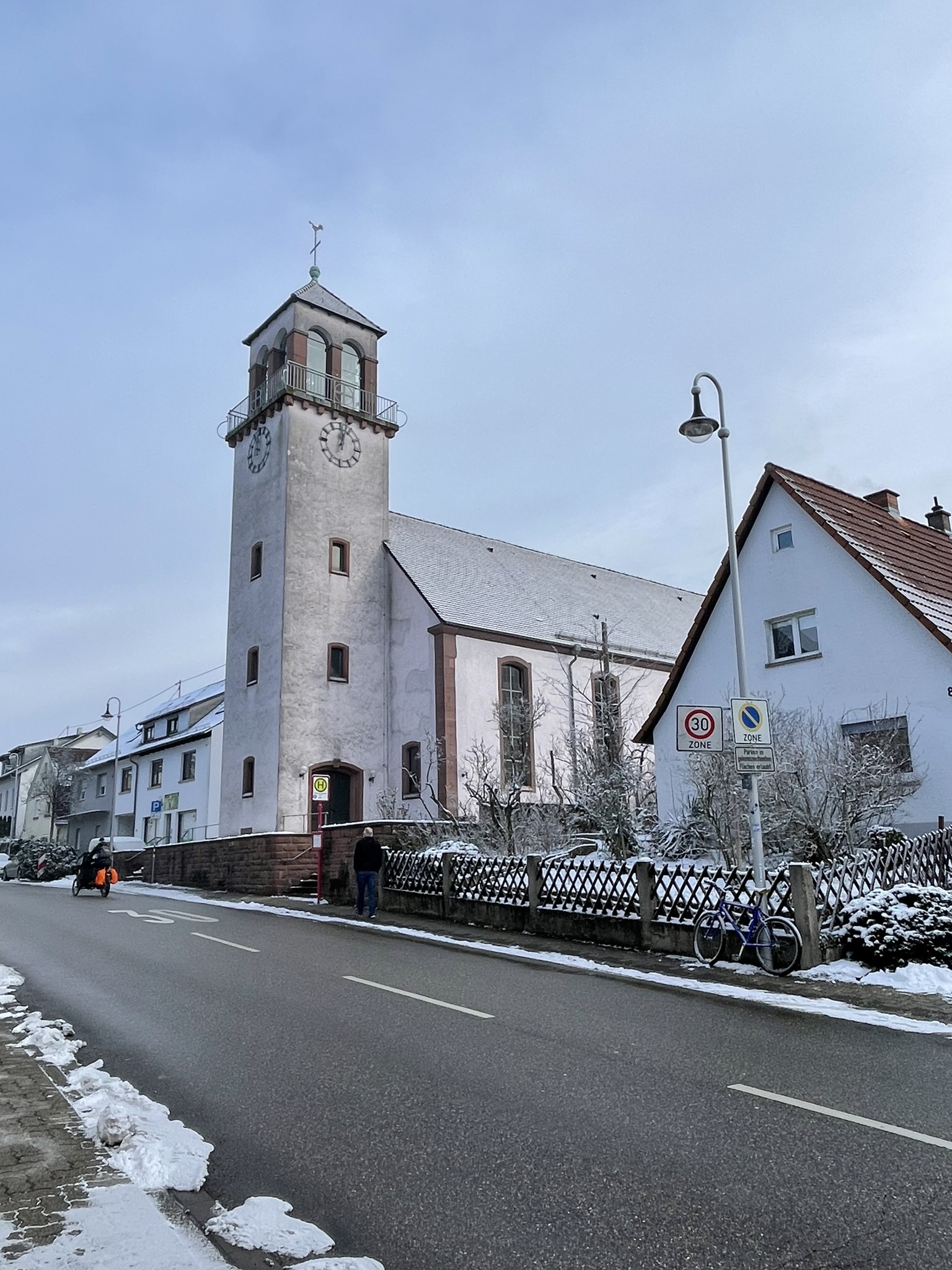
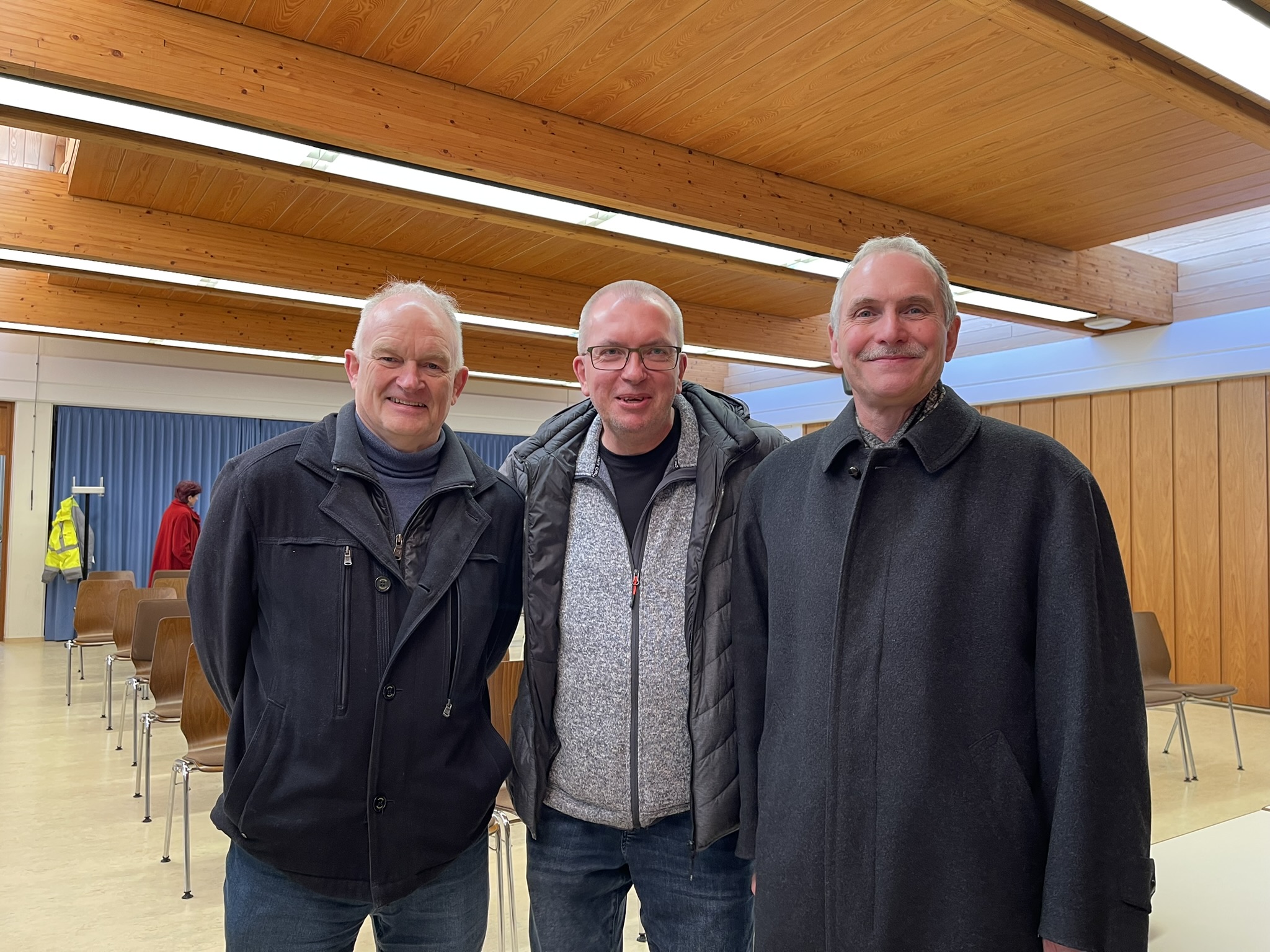
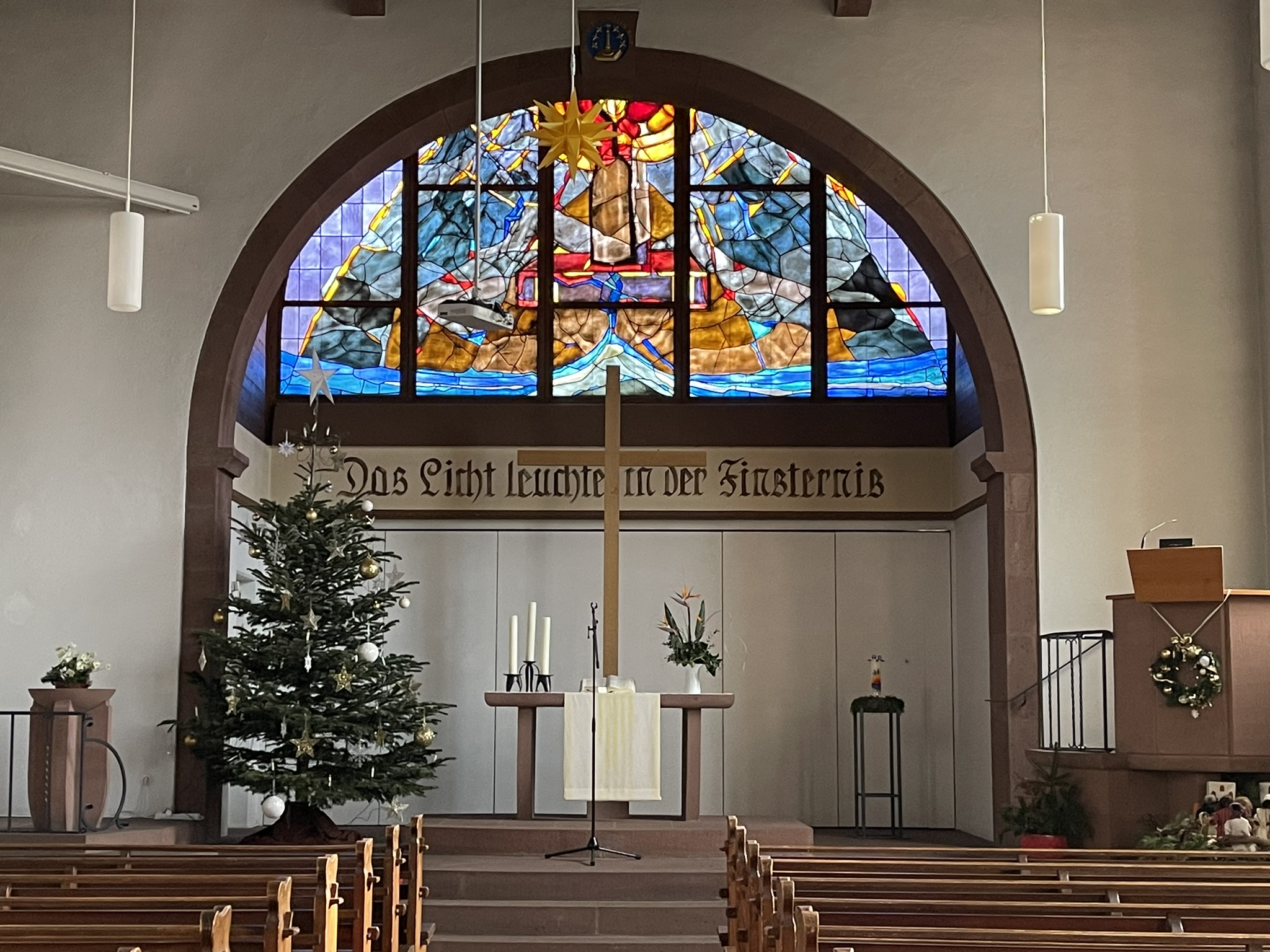

When we entered the Waldesian church it was empty and we looked around. Soon we became aware of chattering coming from the rooms behind the main aula. From these rooms a man appeared who greeted us. Wilfried explained in German why we were there and the man introduced himself. He was Roland Crocoll! Christian Clour (1750 – 1794) married Johana Margaretha Crocoll (Crocollin), daughter of Jean Crocols, on the 11th March 1773. Christian was an attorney, judge, and carpenter, (See also The Clurs (Clours) of Welschneureut (1699-1860)). So, amazingly the first person I met at the Waldesian Church was a distant cousin! He took us to the back and introduced us to the current pastor Andreas Reibold who told us some of the history of the Huguenots and Waldesians of the early 18th century.
After Welschneureut we went to Mülhburg. When we got to the church it was closed. We did not expect to find any Clour graves in the graveyard, as they would have dated from between 1699 and 1700, and thus would have long been recycled. Nonetheless, our walked through the extensive graveyard was interesting.
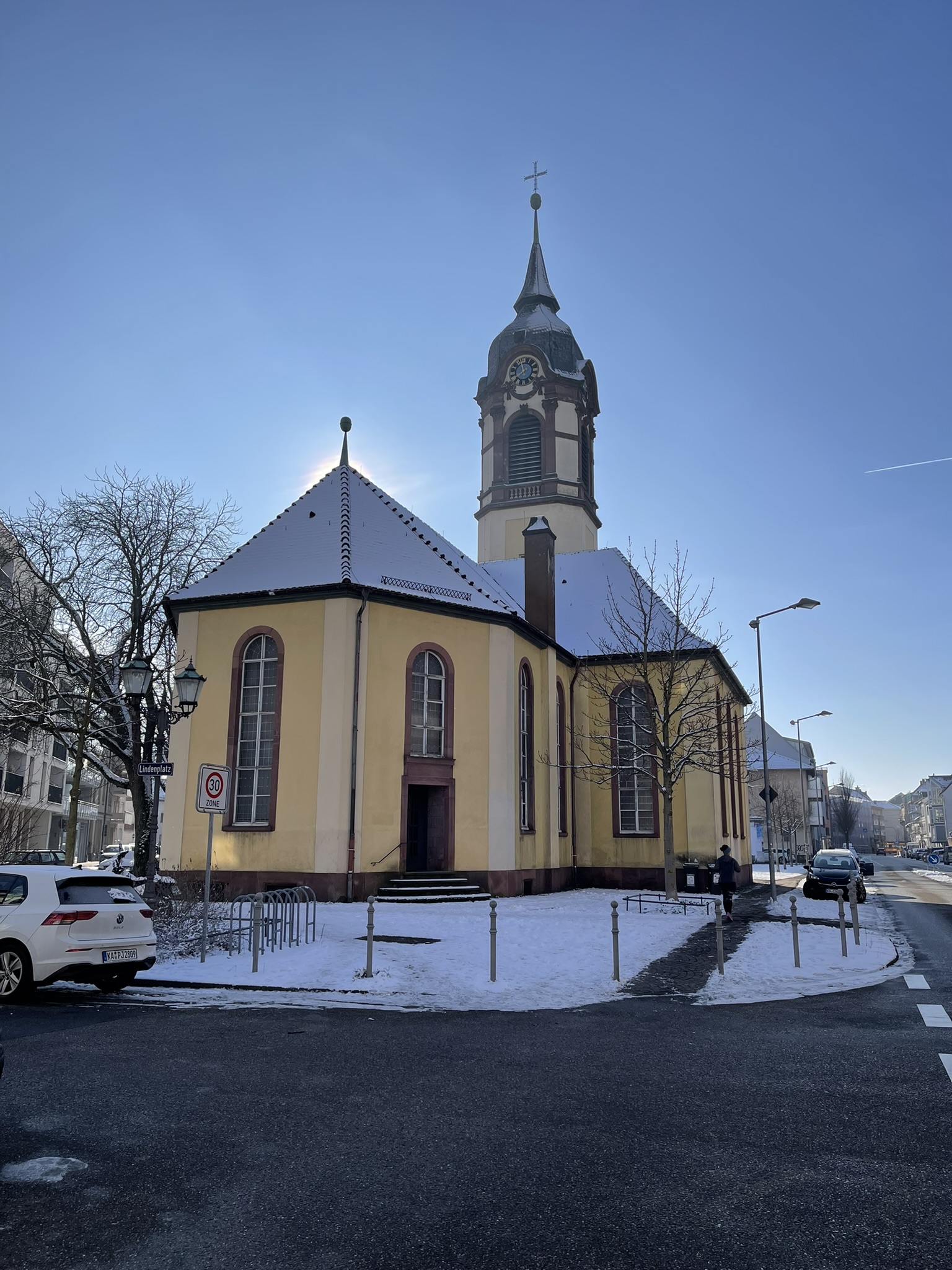
I did not get all the answers I was looking for, but I gathered much information and was presented with new questions. I had met up unexpectedly with a distant cousin, found the Huguenot museum in Friedrichstal, and in the book of Oskar Hornung, I found more information about Clorius Clour. I will be returning to Friedrichstal when the museum opens again and after that… who knows, maybe a visit to the Canton of Bern.
